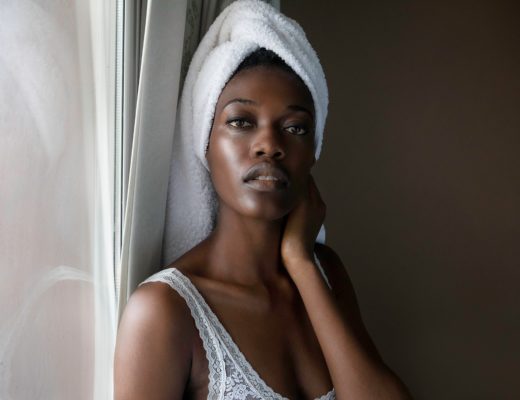This page may contain affiliate links. Read my full disclosure for more info.
Natural hair is mighty but surprisingly fragile. Each twist and turn of your strands is a place where breakage is more prone to occur. Combine that with the dryness that many naturals experience, and you have a recipe for damaged hair. Handle your hair delicately, and it will thank you.
1) Your couch
You likely already know that sleeping in a satin or silk scarf or bonnet can protect your delicate strands from rubbing against your pillow and leading to breakage. What you may not have considered is that sitting up against the upholstery on your furniture can have the same effect.
Wear your scarf when snuggling in for an evening on the couch, or place a clean silk or satin scarf over the back to protect your hair.
2) Your headscarf or bonnet
If your headscarf or bonnet is too tight, it could be putting pressure on your hair and scalp leading to breakage and hair loss.
Make sure your nighttime head covering is only tight enough to stay on your head. Change up the way you wear it so that one area of your hair and scalp isn’t getting too much stress placed on it each night. Be wary of bonnets with elastic around the inner edge that pulls on your delicate hairline.
3) Your neck scarf or collar
Scarves and collars are usually made of cotton or other rough, absorbent materials. If your hair is rubbing up against this material, either at the nape or at the ends, it could cause breakage.
Wear a silk or satin scarf, shirts without collars, or pin your hair up in a protective style to avoid this.
4) Hats
We are finally out of winter hat season in the northeast, but summer hats and visors can be a culprit in breakage as well. Again, because they are often made of rough materials, they can definitely contribute to dryness and breakage.
To combat this, wear a satin cap or scarf under your hat, or try a hat with a satin lining sewn in. These are available at GraceEleyae.com or Etsy.
5) Bobby pins
Bobby pins placed on the ends of your hair or in a position that pulls the hair can cause breakage.
Carefully place pins away from the ends of your hair, and so that there is no tugging. Hairpins (the open, U shaped kind) can be gentler on your hair when placed correctly.
6) A signature style
We all have our favorite styles, but it’s important not to have tension in the same areas of your hair and scalp for extended periods of time, which can lead to traction alopecia.
Favor styles that put less tension on your hair and scalp, and change your style periodically.
7) Headbands and ponytail holders
When headbands and ponytail holders are placed tightly, you run the risk of breakage, or worse, damage to your hair follicles from the tension.
Like bobby pins, wear ponytail holders and headbands only tightly enough to hold your style. If you see or feel excessive tension on your hair or scalp, or if it’s giving you a headache – we’ve all been there – don’t hesitate to loosen it up.
8) Protective styles
Protective styles are only protective when used properly. Your hair still needs to be cleansed and moisturized on a regular basis, so protective styles should not be kept in long enough for your hair and scalp to become dirty and parched.
Protective styles can also cause long-term tension on certain parts of your hair and scalp, which can lead to breakage and hair loss.
When protective styling, choose styles that don’t pull on your hair and take your hair down regularly to cleanse and remoisturize.
9) Weaves
When weaves are installed improperly or kept for too long, your hair and scalp can be damaged due to tension being placed on them for extended periods of time and lack of exposure to moisture.
Avoid using glue, and braid the hair and sew in tracks as loosely as possible. Do not keep weaves in longer than recommended.
10) Combing, Brushing
Combing and brushing your hair, as well as using various detangling tools can wreak havoc on your hair. This depends a lot on your hair type and your technique.
For most naturals, combing hair while damp and saturated with conditioner or other detangling product helps reduce breakage by allowing the comb to glide through the hair. The same can be said for detangling brushes.
Conclusion
There are many small things we do each day that contribute to breakage. This is why so many of us experience hair that doesn’t seem to grow. It does grow, however it breaks off just as quickly. Using the guidelines above, you will have healthier hair with the welcome side effect of retaining more length.
For more natural health, beauty, and lifestyle inspiration, join me on Instagram and Pinterest.






